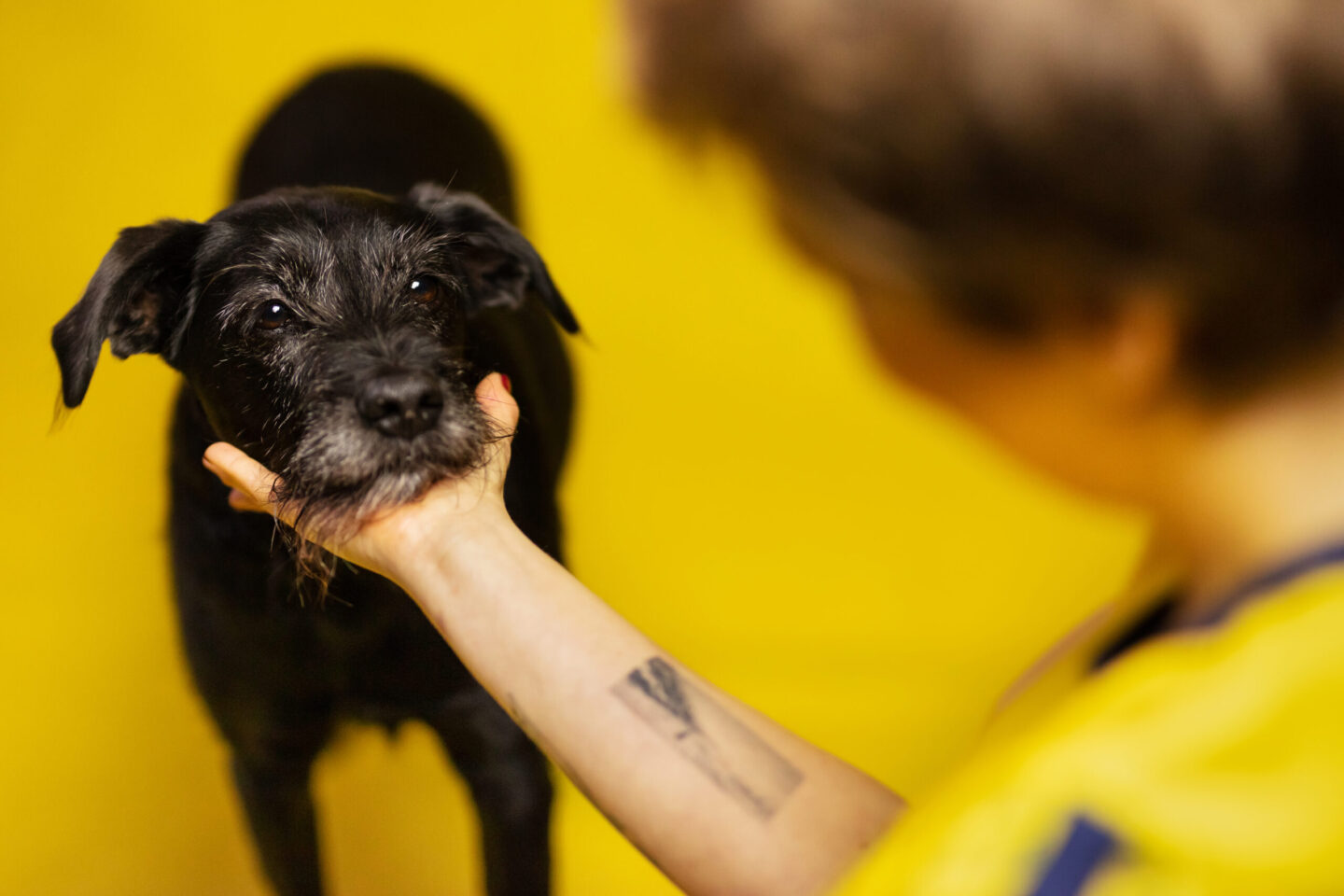Cue for shaping – explored
Shaping, in essence, involves reinforcing successive approximations of a target behavior. It is important to note that shaping is not about waiting for the dog to randomly offer behaviors from which the trainer selects the desired ones. This approach is ineffective and not true shaping. However, the question arises: Do we need a cue for shaping?
When teaching behaviors that involve objects, such as going around a cone or targeting a paw, the object itself serves as a cue for the dog to interact with. With the addition of verbal or visual cues, we establish stimulus control, and the object alone no longer triggers the behavior.
The challenge arises when shaping behaviors without specific objects. In such cases, the dog relies on environmental cues, such as the trainer’s body language or location, to initiate the behavior. Even after introducing verbal or visual cues, the dog may continue to perform the behavior “without a cue,” or at least that’s what we may think. This is especially true if we are unaware of the environmental cue the dog has associated with the behavior during the shaping process. The presence of the old cue, chosen by the learner during shaping, can still evoke the behavior.
As trainers, it is crucial to be mindful of what we teach our dogs. Have you ever observed a dog spinning or turning their head as soon as the handler holds a clicker, sits on the floor, or begins a shaping session differently? These behaviors are often labeled as impatience, frustration, or difficulty in shaping. However, the reality is simpler. If we don’t add a deliberate cue to the shaping process, the dog will select their own cues based on what they perceive as relevant. Adding an object to the environment that predicts the behavior being shaped helps both the trainer and the dog differentiate between behaviors. This object can be placed next to you or a specific location in the room dedicated to shaping a particular behavior. It becomes easier to remove this cue once stimulus control is established. Otherwise, your dog may associate unrelated cues, such as the way you sit, with a previously shaped behavior, leading to difficulties in teaching new behaviors.
Awareness of these cues is crucial. By reinforcing the default position and adding a visual cue during shaping, we can prevent unwanted associations and behaviors. For example, if a dog associates sitting with crossed legs as the cue for backing, it can be challenging to shape new behaviors when you sit in the same manner. The dog may persistently offer the previously reinforced behavior in similar situations.
To illustrate this concept, consider the example of Gacek, who shaped the backing behavior without deliberate environmental cues. Gacek, being smart, picked up cues on his own, but not necessarily the ones desired. In this case, he associated the trainer sitting with crossed legs as the cue for backing. Even after adding a verbal cue and being able to perform the behavior while the trainer stood or sat on a chair, Gacek would still back up “without a cue” when I was on the floor with crossed legs. This is because the crossed legs had become a powerful, reinforced cue over an extended period. With awareness during shaping, the trainer could have prevented this association by reinforcing the default position or adding a visual cue that could later be removed, thus preventing the undesired behavior from occurring.
In a video demonstration, Gacek is shown responding to different cues. When I sit on the floor with crossed legs, the default behavior is backing. Although I cue other known behaviors, Gacek consistently adds a few steps backward, not out of impatience or frustration, but in response to the cue he associated with backing. However, when I add a blanket used for shaping the behavior of laying on the side, without changing my position, the visual cue of the blanket becomes stronger for Gacek – it has longer reinforcement history than sitting with crossed legs.
Consider the difficulty I would face if I attempted to shape another behavior while sitting on the floor with my legs crossed. It would be a challenging task, especially since I am now aware of the unintended cue associated with backing. However, imagine the situation if I hadn’t realized this cue’s significance and proceeded to shape another behavior in the same context. What do you think would have happened?
When embarking on shaping new behaviors, it is essential to carefully consider the cues involved. Think about what might become relevant to your learner. Remember that the cues that evoke a behavior for your dog may be different from what you expect or perceive. By being mindful of these cues, you can set yourself and your learner up for success in the shaping process.

